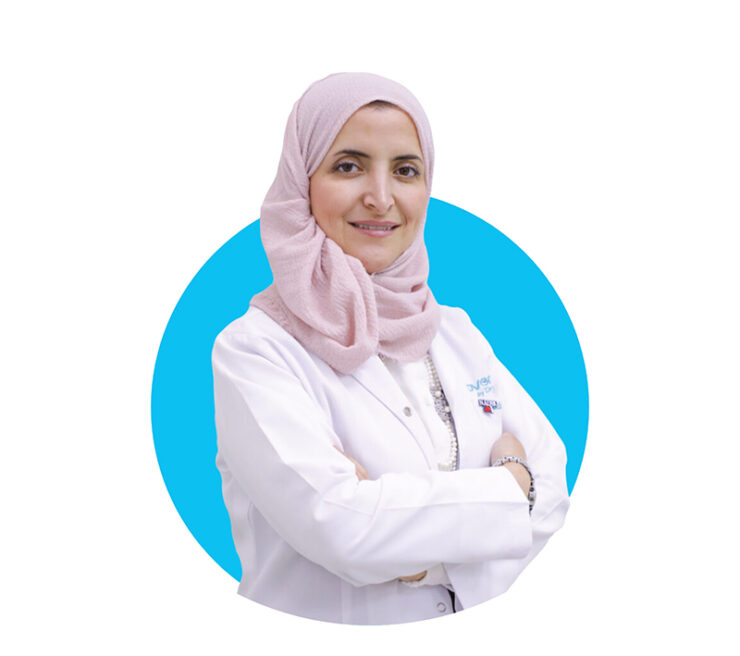Mammogram in Dubai, Abu Dhabi and Al Ain
A mammogram is an X-ray of the breast that allows early detection of underlying breast changes in women experiencing no signs or symptoms of breast cancer. During this procedure, the breasts are compressed between two firm plates to spread the breast tissue. Then the X-rays take black and white images of the breasts. These images appear on an external display to be examined by the doctor for any signs of cancer.
Why is it performed?
A mammogram may be used either for screening or diagnostic purposes. The frequency of having a mammogram depends on your age and your risk of breast cancer.
-
Screening mammography
In this case, a mammogram helps to detect the presence of breast changes in women who do not have new signs, symptoms, or abnormalities in the breast. Screening mammography aims to detect cancer before clinical signs are visible.
-
Diagnostic mammography
Diagnostic mammography helps to check for suspicious changes in the breast, such as a new breast lump, breast tenderness, abnormal skin appearance, nipple thickening, or nipple discharge. It is also crucial to evaluate the abnormal results revealed by a screening mammogram. Diagnostic mammography involves capturing additional mammogram images.
When should I start screening for breast cancer and abnormalities?
There is no specific age to start breast cancer screening. Experts and medical organizations still do not agree on the age at which women should begin regular mammograms or how often they should have the tests. Talk to a doctor about risk factors specific to your condition, your preferences, and the benefits and risks of screening. Together, you can determine the most appropriate mammogram schedule for you.
There are some general guidelines for when to start screening mammography:
Many women get their first screening mammogram at the age of 40 and continue to have it every year or every two years. Professional groups differ in their recommendations. The American Cancer Society recommends that women at moderate risk begin annual mammography screening from age 45 through age 54 and then continue to have one every two years. The US Preventive Services Task Force recommends that women start testing every two years from age 50 to age 74. However, both groups agree that women can choose to undergo testing from age 40.
Women at increased risk of breast cancer may benefit from starting mammograms before age 40. Talk to your doctor to better understand your risk of developing breast cancer. Risk factors such as family history of breast cancer or a history of precancerous breast lesions, may lead your doctor to recommend magnetic resonance imaging (MRI) in addition to mammography.
How to prepare for your mammogram
If you have not gone through menopause, this is usually during the week after your period. Your breasts are likely to be sensitive to pain during the weeks before and during your period.
If you are going to Novomed Breast Care Clinic for the first time for your mammogram, request to have any mammograms you previously had copied on a CD so that the radiologist can compare your previous mammogram with the new images.
Avoid using deodorants, perfumes, lotions, or creams under your arms or breasts. Mineral particles in creams and deodorants could be visible on your mammogram and cause confusion.
Taking pain relievers, such as aspirin or ibuprofen, an hour before a mammogram, may ease the discomfort of the test.
During the Test:
After removing clothes from the waist up, the patient stands in front of the mammogram machine. The specialist places one breast on the platform and raises or lowers the platform according to the patient’s height. The specialist helps the patient position her head, arms, and torso to allow an unobstructed view of the breast.
The breast is gradually pressed against the platform by a transparent plastic plate. The pressure continues for a few seconds to stretch the breast tissue. The pressure is not harmful, but the patient may feel uncomfortable or at times. Tell the specialist if you have too much discomfort.
The breast must be evenly compressed to allow the X-rays to penetrate the breast tissue. The compression also keeps the breast steady to reduce motion blur and minimizes the required radiation dose. During the brief x-ray exposure, the patient will be asked to stand still and hold her breath.
After the test
After creating images of both breasts, the patient may be asked to wait while the specialist checks the quality of the test result. If the images are not clear for technical reasons, the patient may have to repeat part of the test. The entire procedure usually takes less than 30 minutes, after which the patient can leave and resume her usual activity.
Results
A mammogram produces black and white images of breast tissue. Mammograms are digital images that appear on a display screen. The radiologist interprets the images and sends a detailed report of the results to the doctor.
The radiologist looks for evidence and signs of carcinogenic or non-carcinogenic (benign) conditions that may require further testing, follow-up, or treatment.
Possible mammogram findings include:
- Calcifications in ducts and other tissues
- Lumps or masses
- Asymmetric areas
- Dense areas that appear only in one breast or in one specific area
Calcification can accumulate as a result of cell secretions, cell debris, inflammation, and trauma, among other causes. Small, irregular deposits called microcalcifications may be associated with cancer. Larger, coarse areas may result from aging or a benign condition, such as a fibroadenoma, a common non-cancerous tumor of the breast. Most breast calcifications are benign. However, when the calcifications cause concern due to their irregular shape or increased number, the radiologist may request additional diagnostic images with magnification.
Dense areas indicate the tissues in which there are more glandular cells than fat, which can make calcifications and lumps harder to identify or distinguish from normal glandular tissue. Distorted areas suggest tumors that have invaded neighboring tissues.
If the radiologist notices concerning areas on the mammogram images, another test may include additional mammograms, known as magnification view, as well as ultrasound or a biopsy to remove a sample of breast tissue for laboratory testing. Sometimes, diagnostic MRI is necessary for areas where the current imaging result combined with a mammogram or ultrasound is negative, and it is not clear what causes the change or anomaly in the breast.






